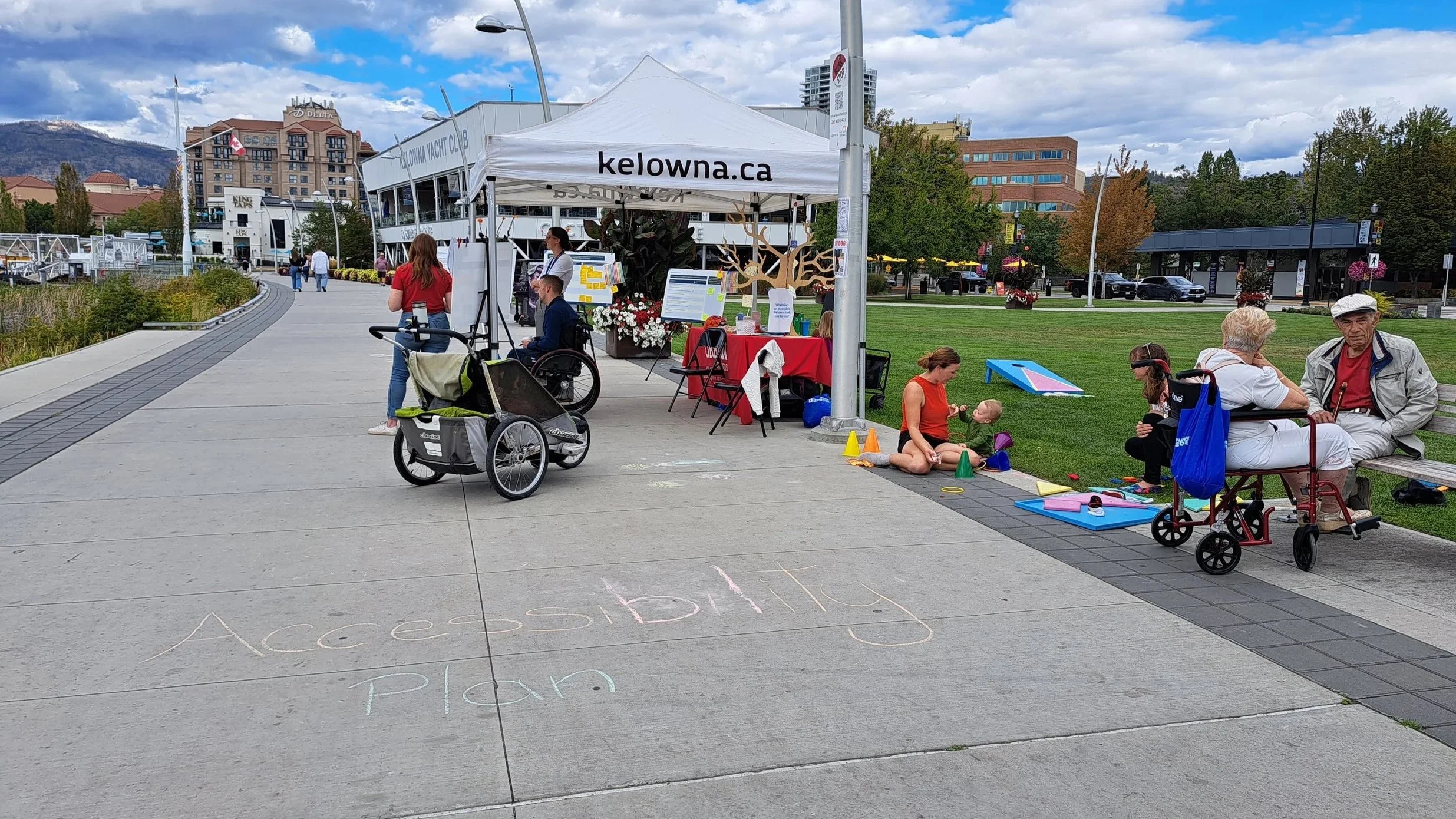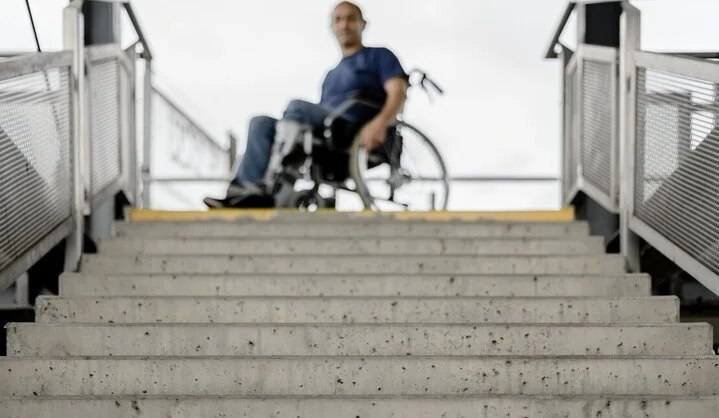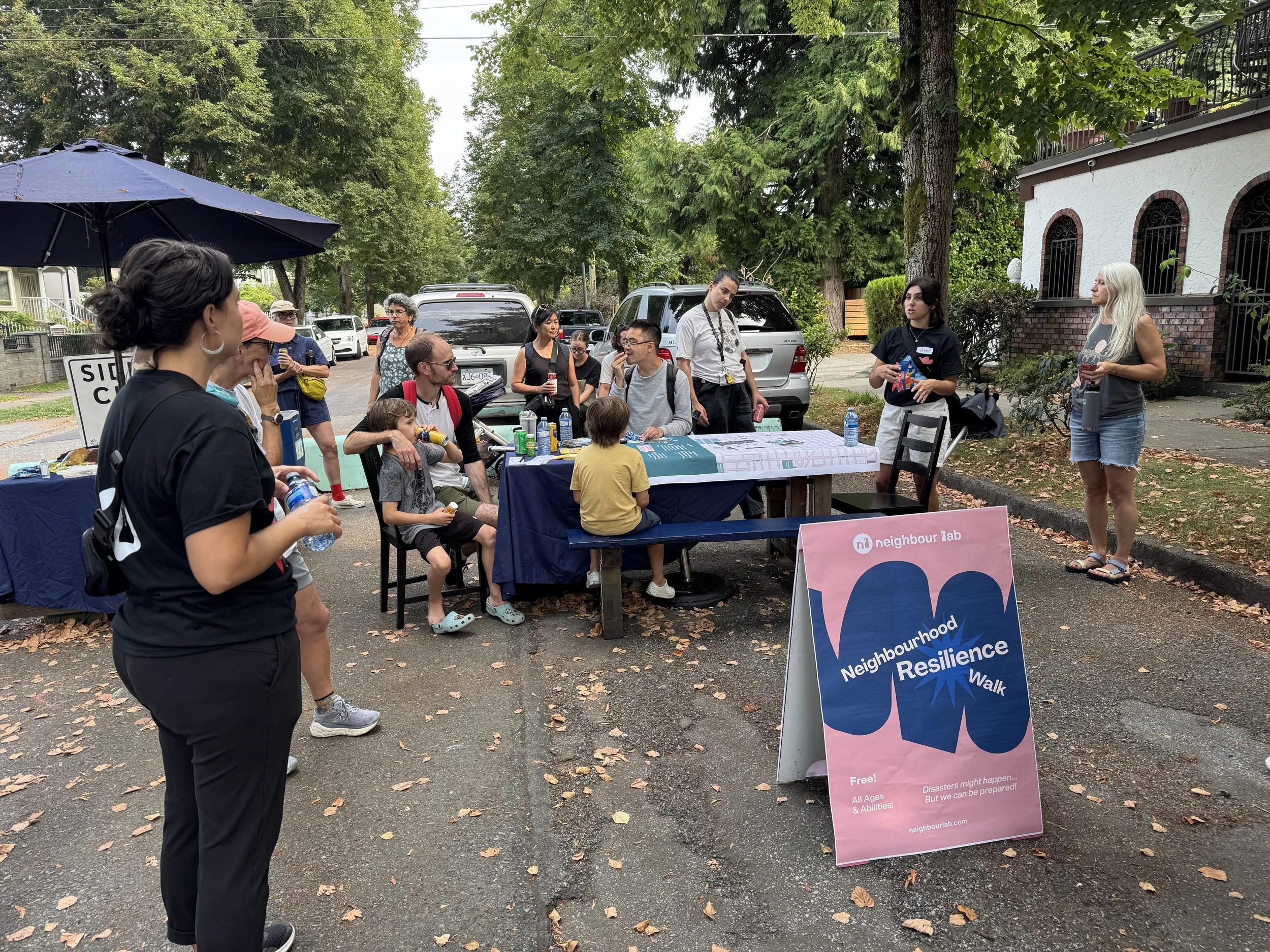Left behind in an emergency: Addressing the accessibility gap
How can cities improve accessibility during emergencies and extreme weather?
A pop-up engagement event in Kelowna, B.C. to hear community accessibility needs in 2024. (Happy Cities)
It’s 2023 and wildfires are raging across the interior of British Columbia. Across the province, communities are breathing dangerously high levels of smoke. Lisa*, a Kelowna resident with pulmonary disease, has sealed her apartment windows with duct tape and is relying on an air purifier, which is running around the clock. But, as the fire burns closer, she’s been asked to evacuate and leave her home.
“I was terrified,” she shared with Happy Cities, during our work on Kelowna’s Accessibility Plan.
It was Canada’s worst wildfire season in history. Eighteen million hectares burned, over seven times more than an average year. Globally, 2023 was the warmest year ever on record—a record quickly broken in 2024. Lisa was not the only one who was terrified.
These last five years have taught us a whole new range of climate-related vocabulary—from heat domes to atmospheric rivers and polar vortexes.
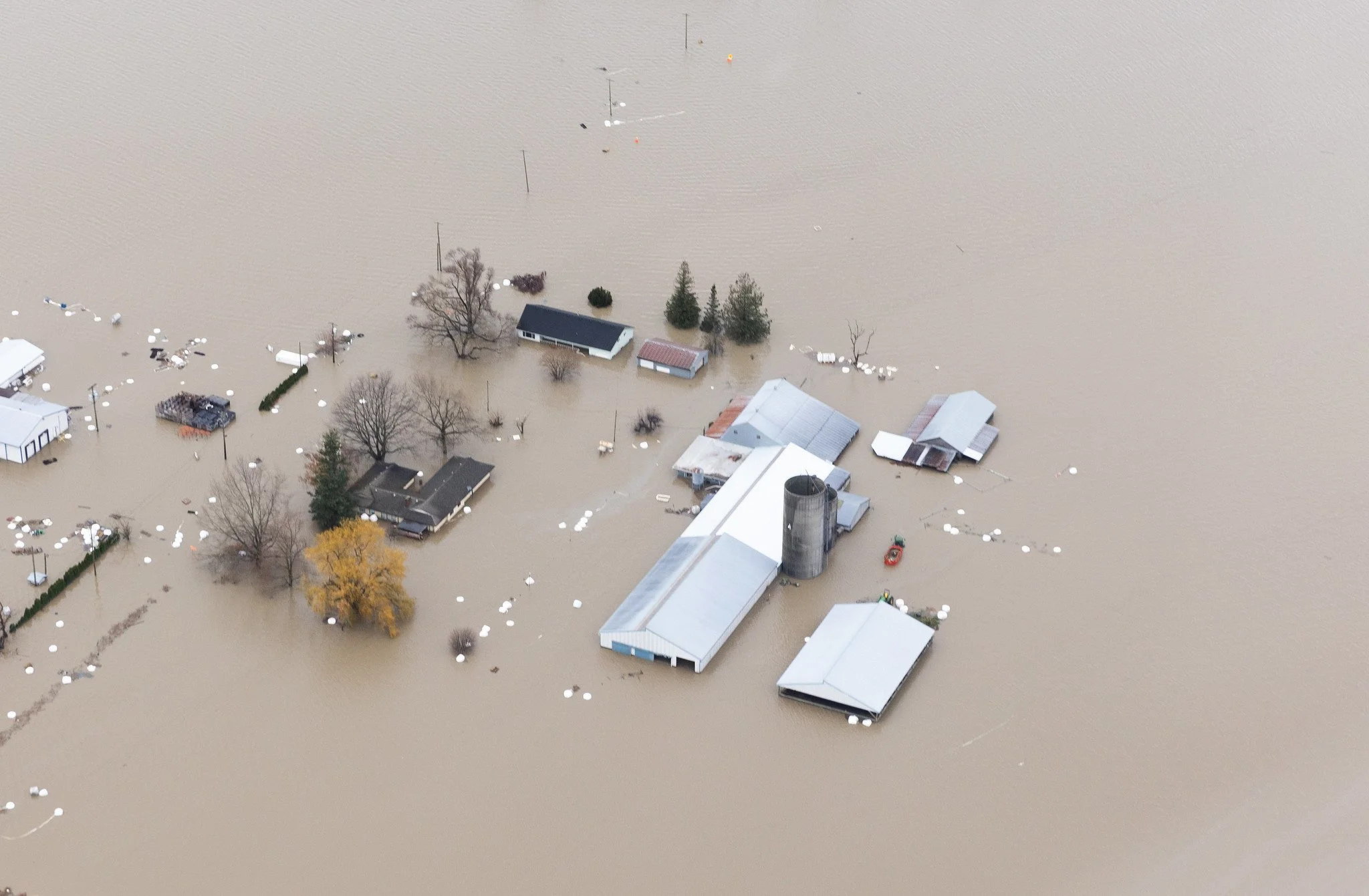
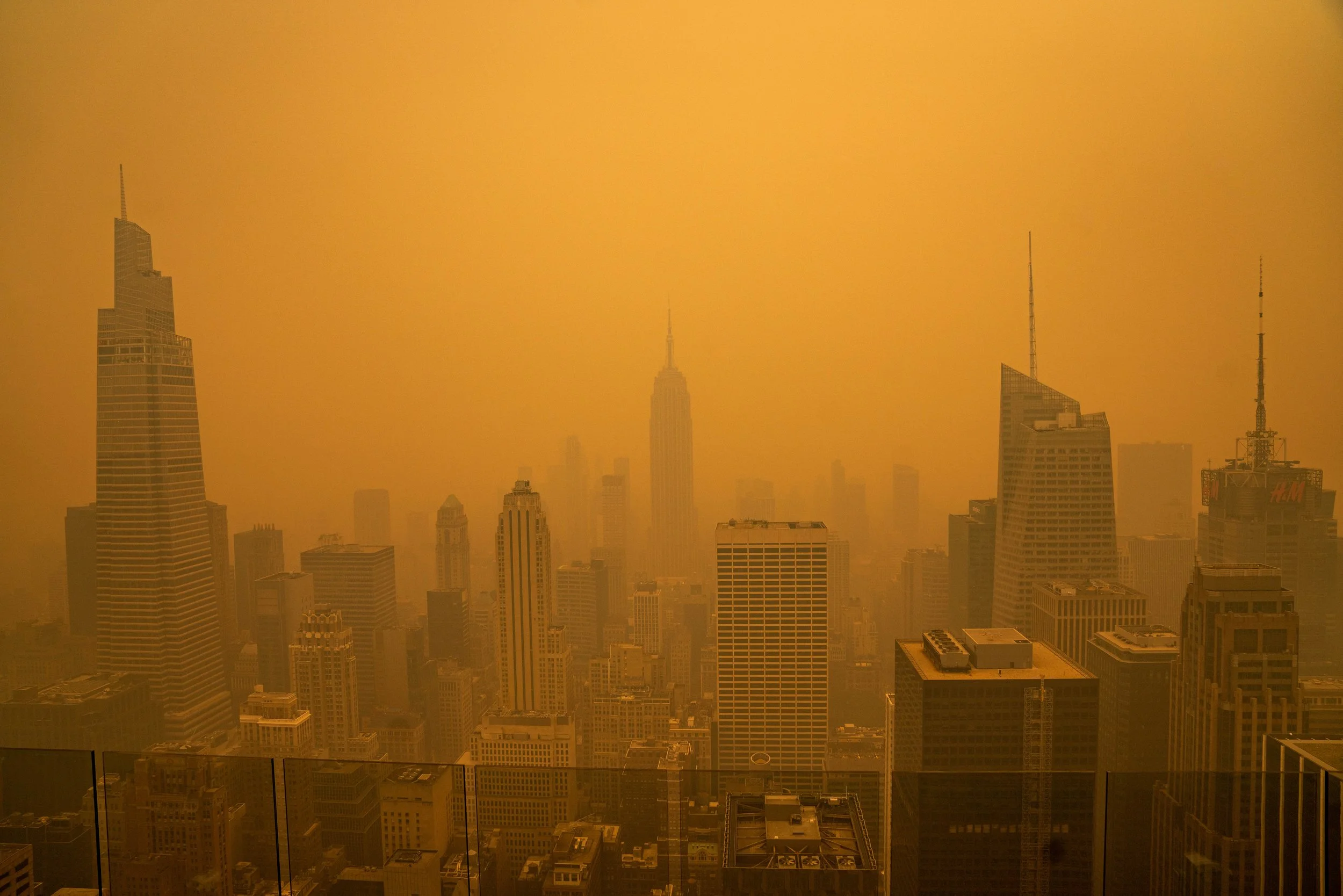
Across the globe, the frequency and intensity of extreme weather are growing. We've seen it in wildfires across Canada and beyond, tornado outbreaks in the United States, and a super typhoon in Taiwan. Unusually deadly floods have swept through Spain, Nigeria, Bangladesh, Brazil, and central Texas in the U.S.
Accessibility amid a changing climate
Our vulnerabilities to extreme weather are becoming increasingly complex. We are now planning for climate adaptation alongside other crises, including housing, social isolation, and opioid overdoses.
The good news is that our overall exposure to risks from hazards like floods and earthquakes is actually decreasing. This means that—even as climate-related hazards become more frequent and intense—they are also less likely to harm people and property. To thank for this phenomenon, we can look to improvements in building code, technology, and emergency planning.
But still, when disasters hit, not everyone experiences them equally.
During the 2021 heat dome, the B.C. Coroners Service determined that extreme heat disproportionately took the lives of people who were older, on low incomes, with disabilities, or living alone. Similarly, a 2025 study from the University of Waterloo finds that risk of injury or death during flooding is higher for those with disabilities and pre-existing health conditions.
People with disabilities often face barriers to accessing critical information and resources in an emergency. And when emergency preparedness and evacuation plans fail to meet the needs of all residents, it can become a matter of life and death.
Planning for accessibility in an emergency
More than a quarter of Canadians identify as having one or more disabilities. This number is expected to increase as our population ages. Planning for a changing climate also means planning for our more vulnerable neighbours, friends, and family—ensuring that policies and programs serve everyone.
Cities across Canada are taking big steps to improve accessibility, prompted in part by improved legislation at the federal, provincial, and municipal levels. However, the same accessibility lens is not always reflected in emergency planning.
At the 2025 Planning Institute of B.C. conference, we co-hosted a workshop with Meaningful Access Consulting, where we asked participants to consider extreme weather scenarios from the lens of people with various disabilities. For example, we shared the story of Jose*, who is hard of hearing and was stressed because he didn’t understand the evacuation protocol shared with him.
We heard challenges—including that budgets are tighter than ever, and municipalities aren’t always aware of best practices for sharing resources and information to people with cognitive and auditory disabilities.
Cities like Kelowna are identifying the need to improve accessibility in evacuation scenarios, including the use of tools like evacuation chairs. (Rick Hansen Foundation)
In Kelowna, Happy Cities and Meaningful Access Consulting worked closely with City staff—and local residents—to create an accessibility plan that improves quality of life for people with disabilities. The plan considers areas such as housing, outdoor recreation, and emergency preparedness. Adopted in May 2025, the new accessibility plan commits the City to increasing accessibility-related resources and information for evacuees, developing evacuation plans that consider the needs of those with disabilities, and improving accessibility at facilities that will be used for reception and lodging centres.
These changes not only improve safety and inclusion for people with disabilities, but improve quality of life for all Kelowna residents and visitors.
As extreme weather intensifies, planners and decision makers have a responsibility to make emergency preparedness more accessible. Critically, this work needs to centre the lived experiences of people with disabilities. By listening to people like Lisa and Jose, cities can design plans that better meet the needs of diverse residents, ensuring that no one gets left behind in an emergency.
Learn more about accessibility and emergency preparedness
Many tools and resources offer guidance on planning within a changing climate. Here are a few we’ve found helpful:
Check out your municipal hazard, risk, vulnerability assessment to learn more about planning for climate adaptation locally.
BC Accessibility HUB has a Developing Your First Accessibility Plan as a practical toolkit for prescribed organizations.
BC’s Accessibility policy and guidelines detail accessibility legislation and content standards
PreparedBC offers emergency preparation resources and hazard-specific planning guides for local governments, including: Resources for People with Disabilities, a Neighbourhood Guide, the Small Business Guide, and Apartment and Condos Guide
UBCM’s Community Emergency Preparedness Fund supports policy and planning for emergency preparedness and the Guidance Document outlines Accessible BC Act requirements for BC jurisdictions.
Disability Alliance BC offers resources around emergency preparedness and disability, including Planning for People with Disabilities in Emergencies and Disasters: A Toolkit for Local Governments and information on setting up accessible reception centres, and communications.
WHO Health Emergency Preparedness in Cities and Urban Settings offers guidance to local authorities.
BC Housing’s Local Government Tool Kit to Plan and Develop Emergency Lodging is a guide of minimum requirements for use by jurisdictions and designers for post-disaster housing designs.
The Emergency Management Central Booking Portal provides Emergency Support Services (ESS) with a tool to ensure evacuees can find safe and secure accommodation during crises.
A group of residents in Vancouver, B.C. took part in a resilience walk exploring how their neighbourhood could prepare for an earthquake scenario. (Happy Cities)
*Names have been changed for privacy.

